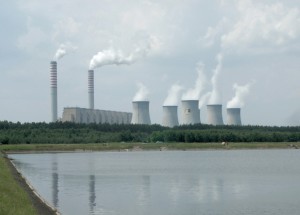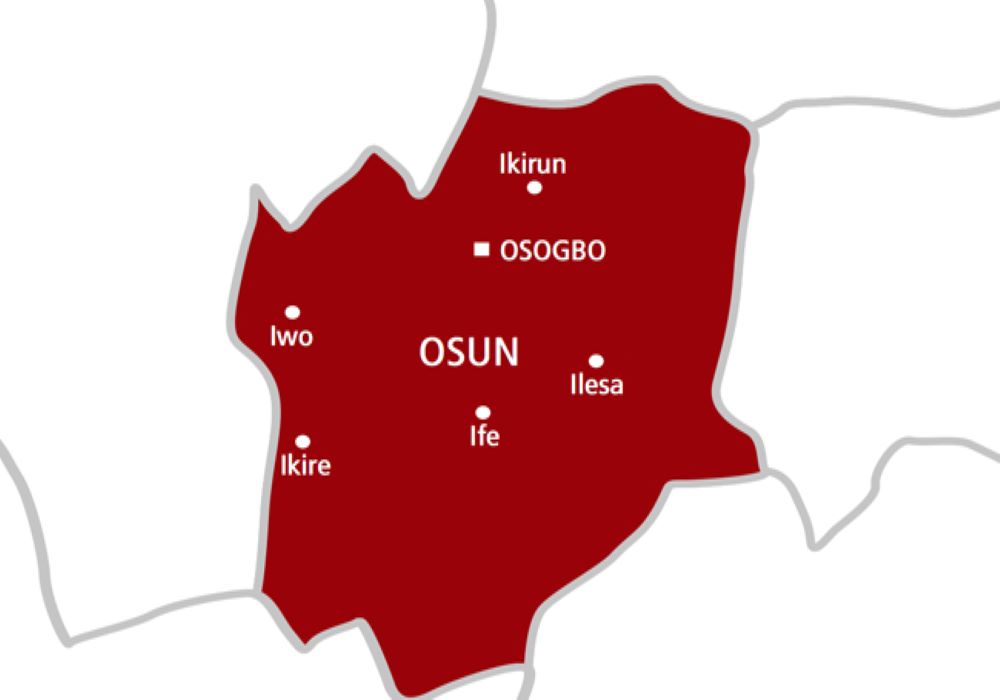Power
Coal-Fired Electricity and the environment

With Kayode ADEOYE
LAGOS-COAL is defined as a readily combustible rock containing more than 50% by weight of carbon. Its other constituents include hydrogen, oxygen, nitrogen, ash and sulphure. Some of the undesirable chemical constituents include chlorine and sodium. Coal is converted to electricity by being burned in a furnace with a boiler with the boiler water heated until it becomes steam. The steam is then used to spin turbines and generators to create electricity. It has adverse effect on the environment as well as coal plant workers.
 Coal remains the cheapest, reliable, accessible, abundant and easy-to-transport source of energy for mankind. The attraction to coal to generate electricity for developing and developed countries on the one hand and the need to moderate its impact on the environment on the other hand, as driven by emerging realities, is the focus of the column for the week.
Coal remains the cheapest, reliable, accessible, abundant and easy-to-transport source of energy for mankind. The attraction to coal to generate electricity for developing and developed countries on the one hand and the need to moderate its impact on the environment on the other hand, as driven by emerging realities, is the focus of the column for the week.
According to an article done by Joby Warrick in the October 16, 2015 edition of the Washington Post, the world’s hunger for cheap electricity is complicating efforts to combat climate change. In North America lies America’s biggest coal deposit, a 100 foot thick slab of brittle black rock spanning an area the size of Rhode Island.
Just a dozen nearby mines, scattered across a valley known as the Powder River Basin, contain enough coal to meet the country’s electricity needs for decades. Burning all of it will release more than 450 billion tons of carbon dioxide into the atmosphere, more than all greenhouse gas emissions from all sources since year 2000. The Obama administration is seeking to curb the United States’ appetite for the basin’s coal, which scientists say must remain mostly in the ground to prevent a disastrous warming of the planet.
Yet each year, nearly half a billion tons of this U.S. owned fuel are hauled from the region’s vast strip mines and millions of tons are shipped overseas for other countries to burn. Government and industry reports predict a surge in exports of Powder River coal over the next decade, at a time when climate experts are warning of an urgent need to reduce coal burning to prevent global temperatures from soaring. Each shipment highlights what critics describe as a hypocrisy underlying U.S. climate policy.
While boasting of pollution cuts at home, the United States is facilitating the sale of large quantities of government owned coal abroad. “We’re a fossil-fuel exporting superpower that goes around lecturing the rest of the world about cutting emissions,” said Paul Bledsoe, who was an adviser on climate change during the Clinton administration. “The United States is reducing its domestic coal use and then simply exporting some of those emissions abroad.”
The production of electricity is the leading source of man-made greenhouse gases in the atmosphere, and the global demand for electricity, particularly in developing nations, will only grow. Coal accounts for 40 percent of the electricity produced globally and more in China and India. The Obama administration has pledged ambitious cuts in carbon pollution over the next 15 years, but that does not reflect emissions from coal and other fuels sold to nations in Asia, Europe and North Africa. Because of accounting procedures.
Despite growing attention on cleaner energy, two-thirds of the world’s electricity is still produced by burning fossil fuels, mostly coal, a proportion that hasn’t budged for 35 years. Emissions of carbon dioxide from power plants have more than doubled since 1980 as the world’s demand for electricity keeps rising according to the International Energy Agency. Over 1.3 billion people around the world have no access to electricity. 40% of the world’s electricity was generated by coal in the year 2012. In 1980, a little more than 8 million gigawatt-hours (GWh) were generated around the world. By 2012, the output nearly tripled as the global population increased and developing countries had a greater demand for electricity.
That same year, coal was burnt in order to generate 9.2 million gigawatt-hours. Of all the fossil fuels, coal releases the largest amount of carbon dioxide per kilowatt-hour of electricity and heat produced, and it remains by far the most used fuel. In 2012, coal was responsible for 72 percent of electric sector emissions but the growth in the demand for coal has slowed over the last three years.
Nigeria has a huge deposit of coal and plans to increase its exploitation for electricity generation. 45% of Nigerians presently have no access to electricity. Clean coal technology, now available, minimizes emission without going afoul of emission threshold and standards. If properly harnessed according to Nigeria’s immediate past minister of power, coal alone can generate about 5,000MW of electricity for the country. In Poland, is one of the biggest thermal generating power plants in the world; The BelchatowCoal-fired power plant that generates 5,400MW of electricity.
Nigeria needs to harness this abundant energy resource particularly, inadvancing electricity generationfor its inhabitants, one that currently stands at less than 5,000MW but in doing so, the country needs to pay attention to the environment. This is the balancing act between coal-fired electricity and the environment.
Power
Nigeria To Face Increase In Electricity Tariffs From July
According to reports, Nigeria’s population may face more challenging times ahead as electricity tariffs are projected to increase by over 40 percent in the near future.
This rise in tariffs could ultimately result in the elimination of all energy subsidies in the country.
Currently, the electricity sector relies on a monthly subsidy of approximately N50 billion, stemming from a shortfall in revenue.
The tariff hike, scheduled to take effect from July 1, will pose another significant test for President Bola Ahmed Tinubu’s administration and its ongoing market reforms.
The government has already taken steps to remove subsidies on Premium Motor Spirit (PMS) and implemented a floating exchange rate for the national currency.
These decisions have added complexity to the price-setting process of the Nigerian Electricity Regulatory Commission (NERC) and its 2022 Multi-Year Tariff Order (MYTO).
Despite power sector players failing to meet the target of supplying a minimum of 5,000 megawatts, even after signing contracts with the Nigerian Electricity Regulatory Commission (NERC), the current Service Based Tariff (SBT) is based on an exchange rate of N441/$ and an inflation rate of 16.97 percent.
According to NERC’s directives in 2015, the average tariff for distribution companies (DisCos) and different categories of end-users was N25 per kilowatt, as per Order 198/2020, which came into effect on September 1, 2020.
However, in the MYTO for 2022, the average tariff increased to N60 per kilowatt across all customer categories, and in the most recent update, it stands at N64 per kilowatt.
The determination of the 2015 tariff relied on a foreign exchange rate of N198.97/$, which increased to N383.80/$ in 2020 and further to N441.78/$ in 2022. In terms of inflation, the 2015 MYTO utilized an 8.3 percent rate, which rose to 12 percent in 2020 and reached 16.97 percent in 2022.
Currently, the inflation rate stands at 22.41 percent, and experts predict it could reach 30 percent by the end of June, considering the floating of the naira and the removal of subsidies on Premium Motor Spirit (PMS).
The tariff determination process takes into account various factors, including the significant metering gap of over seven million, gas prices, losses within the system, and the actual generation capacity. These elements play a role in determining the final tariff.
As anticipated, NERC had projected that the tariff for July 2023 would eliminate subsidies and introduce increases to the previously frozen tariff bands D and E.
These adjustments were intended to raise the bands from N54.59/kilowatt to N62.16 for band D and from N48.37/kilowatt to N61.16 on average. Moreover, the average increase across all bands was expected to reach N67/kilowatt.
However, due to the ongoing floating of the naira and the significant inflationary pressures, it is now projected that the new average tariff will need to be approximately N88/kilowatt for the power sector to recover its costs.
According to energy lawyer Madaki Ameh, the continuous and frequent increases in power tariffs are akin to a form of blackmail against electricity consumers.
Amen said “Indexing the cost of electricity on the dollar is a huge mistake because most of the inputs for electricity supply are local. The DisCos are also holding Nigerians to ransom by failing to increase the supply base, thereby spreading the tariffs across a broader spectrum of consumers to reduce the unit cost of electricity.”
He insisted that as long as there remain many unmetered consumers and many others not connected to the grid at all, the few consumers on the grid would continue to be subjected to unjust tariffs, which are not reflective of the quality of service delivered.
Ameh hoped that the signing into law of the new Electricity Act would mark “the beginning of light at the end of the long tunnel of inefficient and epileptic power supply in Nigeria.”
Segun Ajibola, the former President of the Chartered Institute of Bankers of Nigeria (CIBN) and a professor of Economics at Babcock University, highlighted that there remains a gap between the cost of electricity and the value it provides in exchange.
“Nigerians are still struggling to keep pace with the cost of energy for business and household use. If the electricity tariff goes up as envisaged, the question remains if there will be value for the quantum of electricity so paid for.
“The truth remains that if electricity supply is constant, of the right quantity and quality, the envisaged upward review in the tariff will be gladly absorbed by the populace,” he said.
Lanre Elatuyi, an Electricity Market Analyst, expressed that the recently implemented tariff rate would have significant implications. He emphasized that the devaluation of the Nigerian currency poses a major challenge for companies with dollar-denominated loans to repay.
He said “They will need more naira today to buy a dollar. They need to manage their exposure to foreign exchange risk. Even operators of hydro plants pay their concession fees in dollars. So, wholesale electricity price will be adjusted upward and this will get to the end users’ tariffs too.”
Power
Buhari’s Gov, State Governors Secretly Sold 5 Power Plants – Shehu Sani

Senator Shehu Sani, a prominent Nigerian lawmaker has accused President Muhammadu Buhari’s government and state governors of secretly selling five power generating plants without disclosing the utilization of the funds received.
He disclosed this in his Twitter handle on Monday.
Senator Sani, known for his outspoken nature and activism expresses his concerns over the alleged undisclosed sale of the power plants.
He claimed that the government, in collaboration with state governors, had carried out the transactions without informing the Nigerian public about the purpose of the funds acquired from the sale.
The post reads “Buhari’s Government in collaboration with the State Governors quietly sold the five power generating plants without telling the country what the money was used for.
Power
Nigeria’s VP Inaugurates 240MW Afam 3 Fast Power Project

The Vice President of Nigeria, Prof. Yemi Osinbajo, has inaugurated the Afam 3 Fast Power 240-megawatt turbine project in Rivers State.
The project, which is a subsidiary of the Transcorp Group located in Oyigbo, on the outskirts of Port Harcourt in the state, was unveiled during a ceremony that took place on Tuesday.
The event, which was attended by several dignitaries, including the Chairman of Transcorp Group, Tony Elumelu, and other top officials, saw the Vice President arriving at the venue in a chopper at exactly 11:35 am.
Upon his arrival, he was escorted into the premises where he officially inaugurated the project.
During his speech at the event, he disclosed that the acquisition of the project was approved by the National Council on Privatisation (NCP) and the acquisition cost was ₦105.3 trillion.
Osinbajo further emphasized that the successful completion of the project is a significant breakthrough in Nigeria’s power sector.
In his address, Osinbajo said, “In 2020, electricity subsidies reached N584 billion, but service-based tariffs have led to a doubling of collection in the Nigeria Electricity Supply Industry from N40 billion in 2020 to N80 billion in the first quarter of 2023.
“If this trajectory continues, the Nigeria Electricity Supply Industry will be able to pay for itself. Our administration has also created programs for off-grid for electrification. Rural Electrification Agency now has the capacity to provide electricity supply on a first-class basis.
“We are on track to electrify all Nigerians in the next decade. However, we will not make progress if our gas supply does not improve. The gas supply challenges are hampering improvements.”
He further lauded General Electric, the National Council on Privatization (NCP), and the host communities for their contribution to the completion of the Afam 3 Fast Power 240-megawatt turbine project in Rivers State.
Osinbajo highlighted that the successful completion of the project will significantly increase the country’s power supply capacity, leading to a better quality of life for Nigerians.
In November 2020, the federal government and the Transcorp Power Consortium signed a share sale and purchase agreement in relation to Afam Power Plc and Afam 3 Fast Power Limited.
The National Council on Privatization approved the privatization of the Afam Power Plant back in August 2017, which triggered a competitive bidding process involving 12 prospective investors.
After careful consideration, Transcorp Power Consortium emerged as the preferred bidder with a combined offer of N105 billion.




















